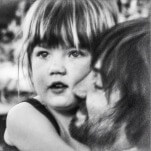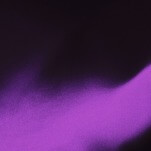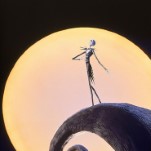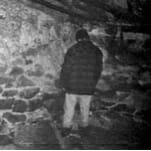Documentarian Rodney Ascher on the Searing Childhood Horrors of Primal Screen
Photos via Shudder
Rodney Ascher knows the nature of fear. He’s studied its roots and its macabre, pop culture-inflected history. He’s seen that fear can’t always be explained or codified, although he’s given it his best effort. More than most people, he’s seen the truly personal nature of fear and phobia—the way that some people are terrified of objects, scenarios or sensations that would never even register as potentially scary to most people. Because in the end, fear is deep, mysterious and yes, “primal.”
Ascher is the director of several fascinating documentaries that touch on the realm of horror, 2012’s Room 237 and 2015’s The Nightmare, both of which are featured on Paste’s list of the best horror films streaming on Netflix. The first film generated significant buzz, and gathers together a group of truly unique individuals who have become obsessed with decoding “hidden meanings” to Stanley Kubrick’s landmark horror film, The Shining. Such theories range from “The Shining is actually about the genocide of Native Americans,” to “The Shining is about the Holocaust,” to “The Shining is Stanley Kubrick’s secret admission that he shot the fake Apollo 11 moon landing.” The Nightmare, on the other hand, is much more genuinely scary to watch, as it examines the phenomenon of sleep paralysis through the eyes of those affected, people who detail the horrific images they’re assaulted by on a nightly basis. It’s a chilling look into a condition that is still not well understood.
Ascher’s latest project, though, is called Primal Screen, a potential documentary series of sorts that was done in conjunction with horror streaming service Shudder. (You should also check out our ranking of the 100 best horror movies in the Shudder library..) It’s a concept that revolves around childhood terrors—the images and experiences that kids perceive that stick with them forever, that are permanently “burned onto their Primal Screen.” If there was ever a movie trailer or corporate jingle that sent you running out of the room as a child, that’s the kind of experience we’re talking about. There’s only one 30-minute entry right now, but Ascher is hoping the first will be well-received enough to create many more Primal Screen entries.
In honor of our first glance at Primal Screen, I had a conversation with Ascher about his films, his fascination with fear, and his unique purview as a documentary filmmaker.
Paste: Before Room 237, it looks like the titles of your short films suggest that many of them were also horror themed. Have you always been so passionate about horror?
Ascher: Well, it’s always been one of the top two or three things I’m fascinated in, along with mystery, comedy and experimental film. There are a couple of pools I’ve been diving into over the years.
Paste: What do you find fascinating about the roots of what frightens people?
Ascher: There’s something I like about combining the worlds of truth and fiction in documentary and letting them play off each other. A lot of it was probably trial and error. I came across something years ago when I was doing a short called The S From Hell about people who had a phobia of the Screen Gems logo as kids.
Paste: Really? A logo?
Ascher: Oh yeah. It’s absolutely a real thing. And the Screen Gems logo is only one of many that frightened people. There are people who will talk at length about the United Artists logo, the UA which slowly rotates out of blackness. Or the Viacom logo. All of these subjects, it’s a bottomless pit. But when I talked to these people about why that got under their skin, it revealed something personal, but also adjacent to horror. I love the notion that this stuff can have a profound effect on people—something as simple as a logo, or in the case of Primal Screen not even a horror movie but the trailer for a movie. It can set their gears spinning for years on end.
Paste: Room 237 is obviously what sort of got you noticed by a lot of people. I love it, but I feel like it’s misunderstood by a lot of people. I don’t know how a viewer could fail to realize that it’s not about the theories but about these obsessive people who come up with theories. Have you experienced a lot of misinterpretation of it?
Ascher: I absolutely saw people talk about the movie in a way I didn’t necessarily intend, but for this movie in particular that’s kind of perfect. If we’re talking about different ways that people reacted to The Shining, some of those are very unexpected ways, so to see the same thing happen with Room 237 is satisfying. It’s not “misinterpreted,” but differently interpreted.
Paste: When you’re sitting there for a long time with one of these subjects, do you find yourself thinking, “Well, this theory actually sort of makes sense”?
Ascher: Oh, every time, and it doesn’t take very long. I chose these people because what they had to say was especially compelling. I was always able to see The Shining freshly through each of their eyes. Then the fun becomes to see if the ideas are mutually exclusive from each other, or if they can somehow be reconciled with each other or with how most of the audience sees The Shining.

-

-

-

-

-

-

-

-

-

-

-

-

-

-

-

-

-

-

-

-

-

-

-

-

-

-

-

-

-

-

-

-

-

-

-

-

-

-

-

-

 The depiction of “shadow people” from The Nightmare.
The depiction of “shadow people” from The Nightmare.







































